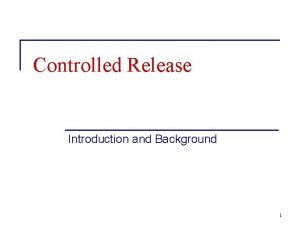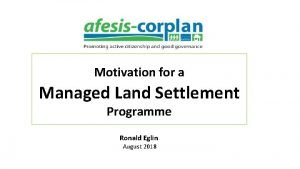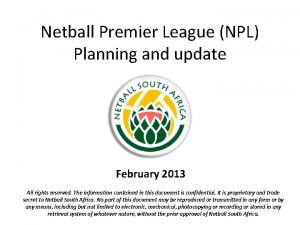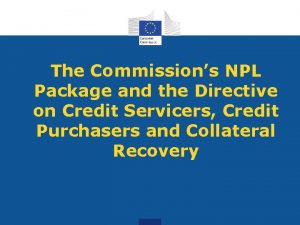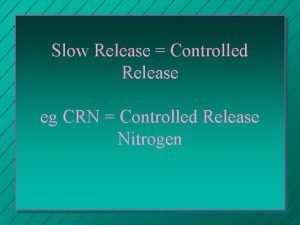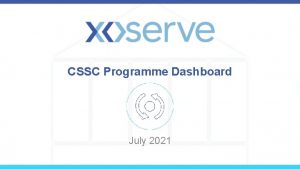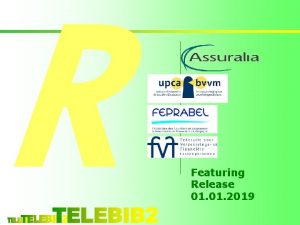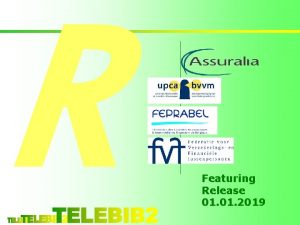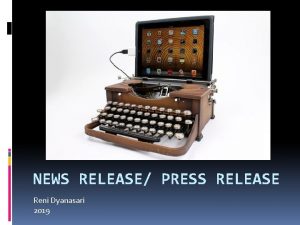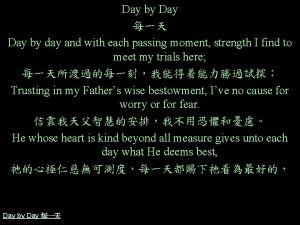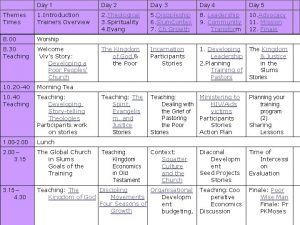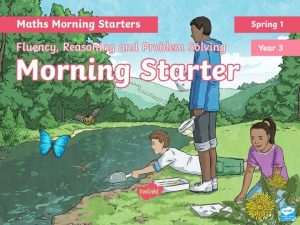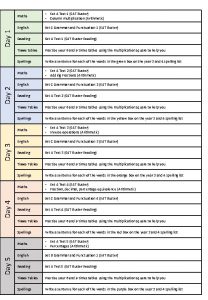NPL Programme Day 3 JULY 2019 Release 01

























- Slides: 25

NPL Programme Day 3 JULY 2019 Release 01. 1 1

Overview of the day § § § § § Welcome and progress check The importance of feedback Break Giving and receiving feedback Creating a feedback-friendly culture Lunch Questioning skills Development and coaching conversations Break § Creating a coaching-friendly culture § Next steps & closure 2

Context 3

Feedback 4

Context 5

Reflection • • When and how do you give feedback to your team? When have you given feedback and it didn’t go well? What did you learn? How have you encouraged your team to give you feedback? Have you received feedback which you didn’t receive well? What was the impact? Describe a time you were given feedback from a people leader that impacted you. What made this feedback so great? How will this impact you and how you give feedback to your team? 6

How to give candid feedback https: //www. youtube. com/watch? v=Zn 9 LA 7 -FZz 8 7

Improve your impromptu feedback https: //www. youtube. com/watch? v=r. Fgu 0 n. OHCc. E 8

SBI feedback model https: //www. youtube. com/watch? v=s 7 h 5 h. Ct. F 09 o 9

Giving feedback Activity one (whole group) 1. I will give you a scenario. 2. Write your feedback statement on a post it note and place in a bowl. 3. Each person will pick out a statement and read it aloud to the group. You can choose tone and body language when reading out but don’t change the words. 10

Giving feedback Activity two (in small groups) 1. We will agree on a scenario. 2. Write your feedback statement on a post it note and practice giving the feedback to the people in your group. 3. Each person should have a turn, the rest of the group can give any feedback. 11

Giving feedback Activity three (in pairs) 1. Use your high level seriousness scenario from your development and action guide. 2. Briefly explain the situation to your partner (30 - 60 seconds). 3. Practice giving the feedback to your partner. 4. Discuss what worked and where you can improve. 12

Develop 13

Overview of the day § § § § § Welcome and progress check The importance of feedback Break Giving and receiving feedback Creating a feedback-friendly culture Lunch Questioning skills Development and coaching conversations Break § Creating a coaching-friendly culture § Next steps & closure 14

Context 15

Reflection • • How often do you discuss aspirations and development with your team members? How do you help them perform at their best? How confident are you in having coach like conversations with your team? Describe leaders you know who are great at developing their people. What qualities, attitudes, and behaviours show they are intentional about development? Describe a positive experience of being coached. What qualities, attitudes, and behaviours did the coach display? 16

The power of great questions https: //www. youtube. com/watch? v=Fr. JIkc. Z 5 log 17

Questions • Situation: What is happening? What is going on? What is occurring? • Clarification: Where did that come from? Am I understanding this correctly? Can you explain that further? • Probe assumptions: What are the facts? What do we know for sure? How could you verify that? • Probe reasons and evidence: What would be an example of that? What evidence supports that? • Probe viewpoints and perspectives: What’s another way of looking at this? What would _____ think about that? • Implications and consequences: What are the risks of not doing this? How does that affect…. . ? 18

The GROW model www. youtube. com/watch? v=x. NLRo 3 j. WPcg 19

A coaching-friendly environment • Trust and openness is by far the most important element. Your team must feel that they can be open without fear of punishment or damage to their career, and you must behave consistently in a way that reinforces the trust. • See mistakes as learning opportunities. In reality, mistakes create problems, but when mistakes, failed initiatives, and unintended outcomes are analysed, you can extract some learning value. 20

Advice from the public service Link to LDC website 21

Advice for future new people leaders (option 1) Work in pairs or small groups. 1. Think about the top two or three pieces of advice around Feedback and Develop that you would give to a new people leader. 2. Share your advice for new people leaders by writing it down on a piece of A 4 paper. 3. These can then be put up around the room for future participants to read. 22

Advice for future new people leaders (option 2) Work in pairs or small groups. 1. Think about the top two or three pieces of advice around Feedback and Develop that you would give to a new people leader. 2. Share your advice for new people leaders by writing it down on the roll of paper, like a graffiti wall. 3. This can then be put up in the room for future participants to read. 23

Advice for future new people leaders (option 3) Work in pairs or small groups. 1. Think about the top two or three pieces of advice around Feedback and Develop that you would give to a new people leader. 2. Share your advice for new people leaders by recording snippets on your phone. 3. Send the recording to your facilitator. 4. These can then be played in future Workouts for other participants to listen to. 24

Any questions? Haere rā 25
 Day 1 day 2 day 3 day 4
Day 1 day 2 day 3 day 4 Extended release vs sustained release
Extended release vs sustained release Extended release vs sustained release
Extended release vs sustained release Sustained release definition
Sustained release definition Ncq greenwich
Ncq greenwich Gauteng rapid land release programme
Gauteng rapid land release programme The harp mysteries of harris burdick
The harp mysteries of harris burdick A strange day in july picture
A strange day in july picture Antwrp
Antwrp Npl netball
Npl netball Npl flatness interferometer light source
Npl flatness interferometer light source Npl certificate in educational leadership
Npl certificate in educational leadership Npl directive
Npl directive Day 1 day 2 day 817
Day 1 day 2 day 817 Mid day meal programme kerala
Mid day meal programme kerala Leaf yeast
Leaf yeast June 22 to july 22
June 22 to july 22 Poppies in july imagery
Poppies in july imagery 2001 july 15
2001 july 15 January/february may/june
January/february may/june Slidetodoc.com
Slidetodoc.com July 4 sermon
July 4 sermon May 1775
May 1775 July 26 1953
July 26 1953 July 12 1776
July 12 1776 Gdje se rodio nikola tesla
Gdje se rodio nikola tesla

